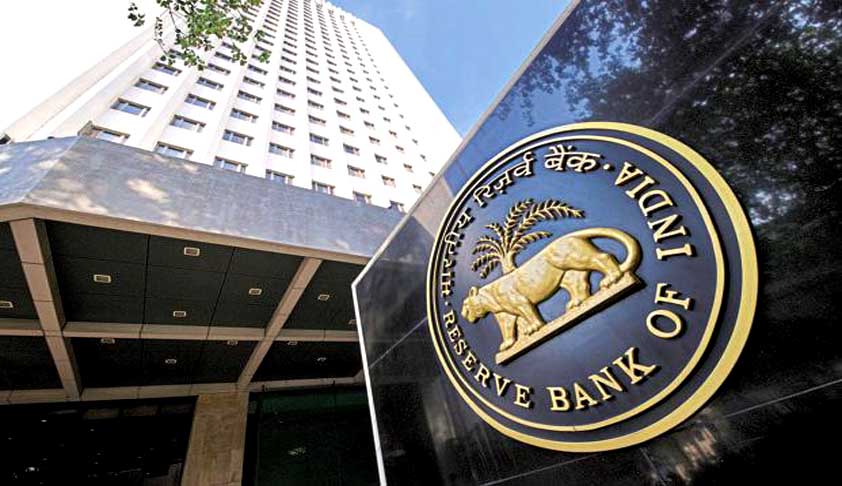Time To Legislate Blood-Sucking Banking Charges On Current And Savings Accounts (CASA)
Dr. V. V. L. N. Sastry
4 Jan 2018 4:35 AM GMT
“It is well enough that people of the nation do not understand our banking and monetary system. For if they did, I believe there would be a revolution before tomorrow morning,” Henry Ford once said. The statement may be proving to be true with the increasing trend in bank transaction charges in India.The country's largest lender, State Bank of India (SBI), collected Rs. 1,771 crores...
“It is well enough that people of the nation do not understand our banking and monetary system. For if they did, I believe there would be a revolution before tomorrow morning,” Henry Ford once said. The statement may be proving to be true with the increasing trend in bank transaction charges in India.
The country's largest lender, State Bank of India (SBI), collected Rs. 1,771 crores between April-November 2017 as charges from customers for failing to maintain monthly average balances in their accounts. This is more than Rs. 1,581.55 crores that it earned as net profit in September quarter of 2017.
Similarly, PNB for the same period between April-November 2017, auto-debited as charges from customers’ accounts, an amount of Rs. 97.34 crores, Central Bank of India Rs. 68.67 crores, Canara Bank Rs. 62.16 crores, IDBI Rs. 52.15 crores and other PSBs put together Rs. 268.97 crores.
This is the case not just with public sector banks, but also with all private banks. Some of the larger private sector banks in the country include ICICI Bank, HDFC Bank, Axis Bank, Yes Bank, IndusInd Bank, Kotak Mahindra Bank and a host of others who have made a name for themselves in providing better services, however, they charge for these services. Both public and private banks offer the same services, however, charges differ and so does the quality and time duration for the services provided.
At a time when banks are struggling with stressed loan portfolios and lack-luster credit growth, other income has come to their rescue, if we go by the above revenue numbers of the banks relating to banking charges. Already at alarming levels, gross non-performing assets (GNPAs), or bad loans, of scheduled commercial banks increased from 9.6% of gross advances in March 2017 to 10.2% in September 2017. Worse, this is projected to increase further over the next 12 months.
Of the total banking industry in India, public sector banks constitute 72.9% share while the rest is covered by private players. In terms of the number of banks, there are 27 public sector banks vis-a-vis 22 private sector banks.
The current day earnings of banks indicate that banking is now banking on non-banking areas and there is significant growth in fee-based income / other income, and literally banks have become intermediaries or brokers of the day for their customers. The easy money which is simply taken away from the customers’ accounts at the cost of the banking system’s inefficiency of earning profits from core banking activities has proved that banks are no longer in core banking; rather in the name of better banking services, they have become big time pawn brokers of yesteryears. If the same trend is going to continue, then it may compensate for credit growth and for reduced economic growth.
Presently, when current account and savings accounts (CASA) are expanding, banks are also getting income by way of transaction fees with increasing use of debit cards. The increase in CASA may help banks by way of transaction charges on ATM/debit cards. What the banks have been doing is to charge consumers for services which can be provided by them for free in return for the free balances of the customers that they hold with them. They are also adding more and more accounts under the chargeable category day by day with their paltry SB interest offerings.
The banks defend themselves by saying that the amounts are debited towards failure of maintaining minimum balance, ATM charges etc and billions of rupees are made by the banks in this manner. The charges are applied by the banks at their discretion and money is debited from customer accounts. In many cases, these debits take place although the customers do not opt for any chargeable services, but the bank personnel fill the check boxes later or fail to do their job of updating the database, even when, customers notice and inform them about the discrepancies. Thus, despite notifications of discrepancies and compliances in the form of mails, and calls, no action is taken to remove the accounts from chargeable status. Thus, the consumer is left with no protection.
The customer who is unable to maintain a minimum balance is a person who has low or less means of income. Charging an amount for this financial position of his results in unwarranted debits from the accounts of the middle class and the poor who tolerate this since there is no other option for them to save money except with the banks and be victimized by these charges.
The government compels citizens to do most of the transactions through the banking system in the name of transparency. The minimum balance requirement stipulated by banks is not sometimes possible to maintain by the salaried, the middle class and the low earning population. Charges in these cases are like sucking blood out of a wounded person. It is a trap for the common man and exploitation in the name of good governance. The same is the case with Current Accounts, where the account holders for various cash strapped scenarios may not be able to maintain minimum balances, for which the banks are penalizing the entities who have trusted them and have opened accounts with them.
Under CASA, when banks are getting funds at their disposal to invest and make money, banks must show their operational efficiency and make money instead of finding ways to meet their inefficiency through squeezing the customers of their balances in the savings and current accounts.
Under the above said circumstances, for any fees to be levied, banking institutions are required to provide rationale and justification for imposing such charges. To introduce new fees or increase existing fees, the banks need to take prior approval of the customer in writing. The tricks of filling in the check-boxes later instead of at the time of application and KYC, by citing reasons like helping the customer to fill in the application, must not be resorted to by the banks. In the event of the client noticing the levy of these charges later, the banks have to oblige by reversing such charges on receiving a written request from the client.
“I believe that banking institutions are more dangerous to our liberties than standing armies,” said Thomas Jefferson. Citizens trust the banks by saving their hard-earned money with the banks. If banks resort to tactics wherein the customers lose control over their legitimate accounts, the account holders are exposed to the danger of losing their hard-earned savings at the discretion of the bank employees. It’s time to waive off bank charges henceforth and reverse all the charges that banks have collected so far.
Rather, banks must improve the savings culture and earn more from their core banking activities and reward the account holders and other stake holders. Banks no longer should be allowed to suck the blood of the account holders in the name of banking charges. If the banks do not fix their ways, it is high time for the government to legislate, “no bank charge and save the public from the banking charges levied by the banks”.
 Dr. V. V. L. N. Sastry is a Researcher in Law at Walden University, USA and Legal Counsel, Lex India Juris.
Dr. V. V. L. N. Sastry is a Researcher in Law at Walden University, USA and Legal Counsel, Lex India Juris.

